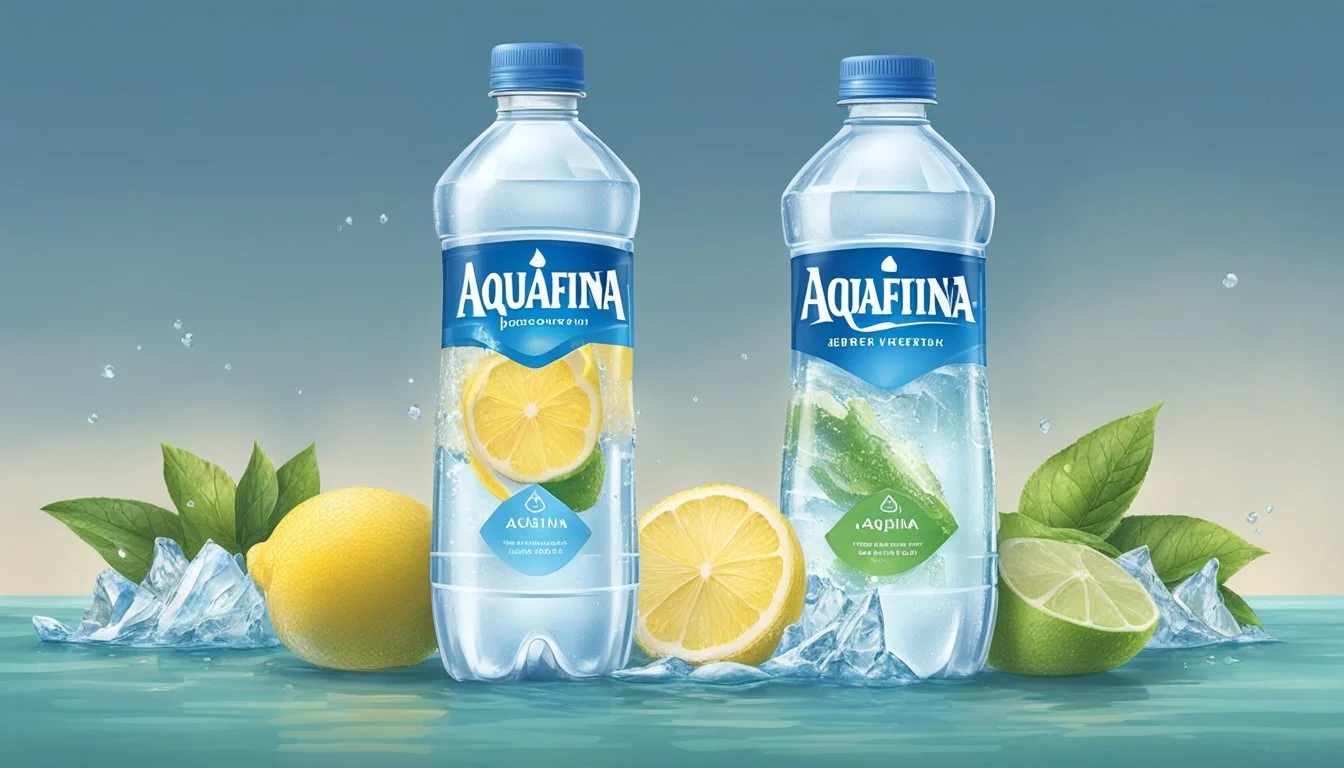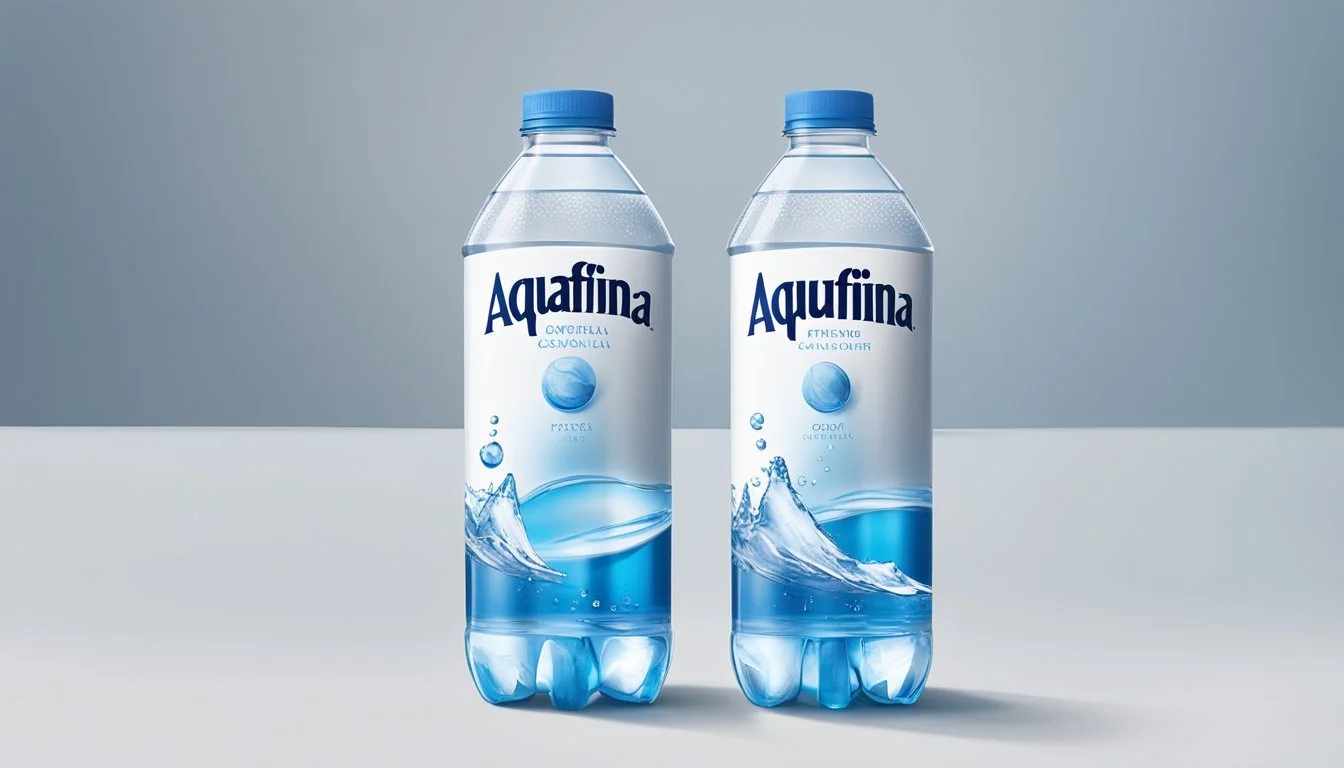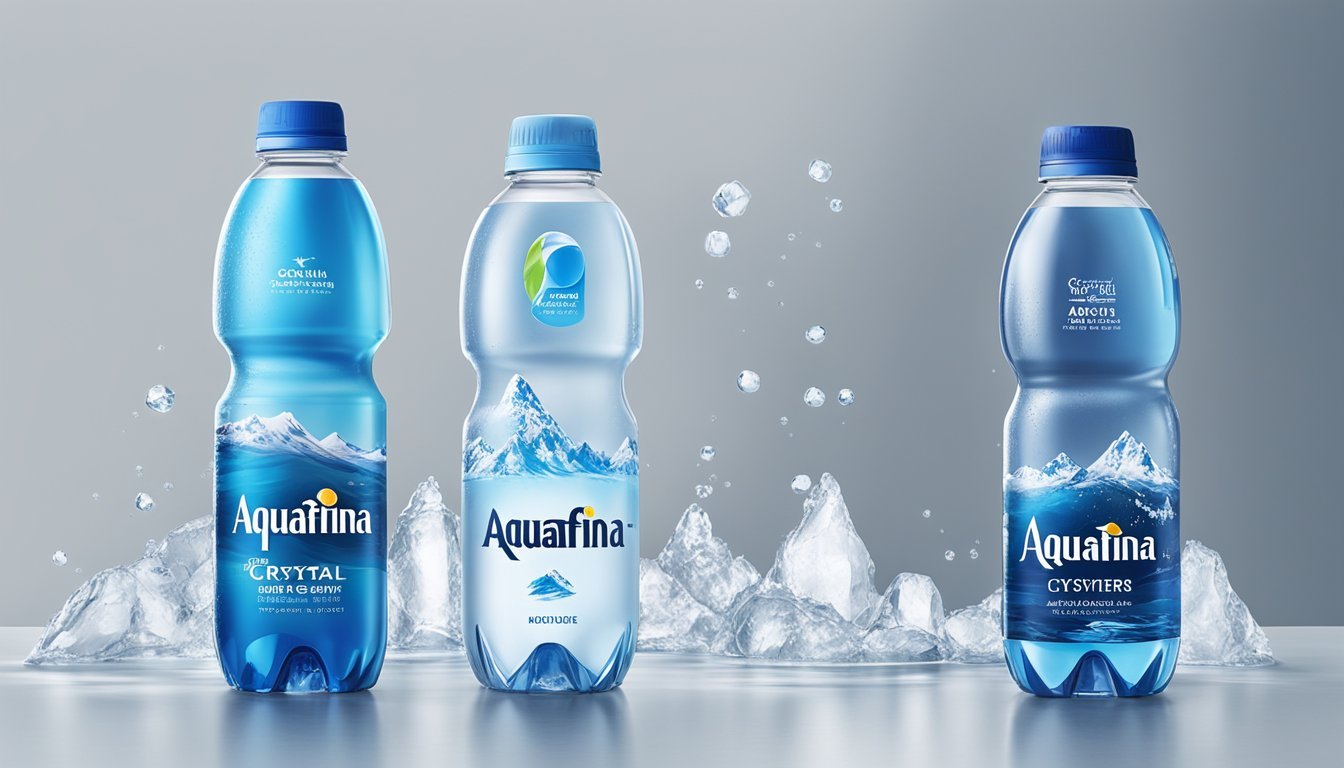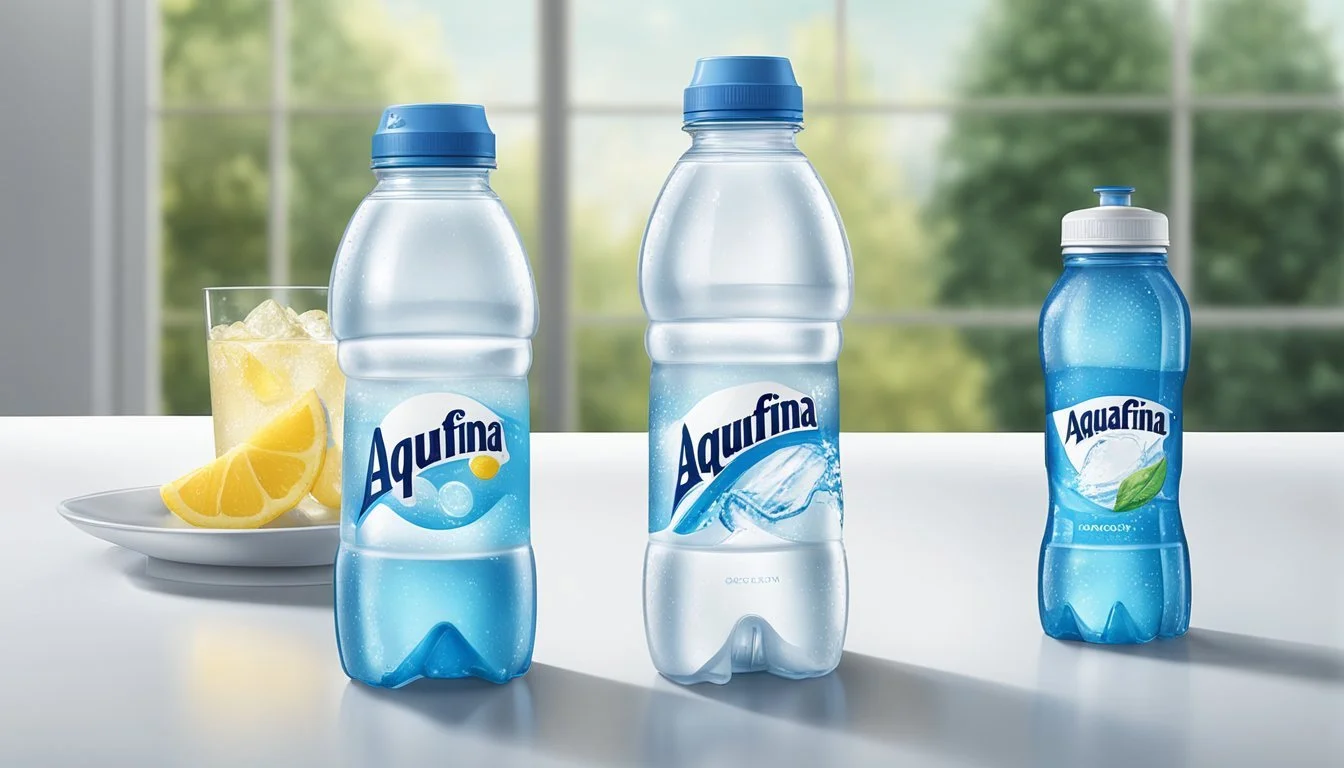Aquafina vs. Crystal Geyser
Unveiling the Superior Bottled Water Choice
When it comes to selecting bottled water, consumers often find themselves choosing between popular brands like Aquafina and Crystal Geyser. Both brands promise purity and quality, but which one stands out as the better option for hydration?
Aquafina, sourced from public water supplies and purified through a rigorous seven-step process, offers a crisp and clean taste. On the other hand, Crystal Geyser bottles its water directly at the source from natural springs, giving it a more natural flavor profile. For those prioritizing a natural spring source, Crystal Geyser presents a compelling choice, while Aquafina excels in its consistent purity and taste.
Understanding the differences between these two brands can help consumers make informed decisions about their hydration options.
Overview of Bottled Water Industry
The bottled water industry has seen rapid growth, driven by increasing consumer demand and a focus on health and convenience. Key players and shifting market trends illustrate the dynamic nature of this thriving sector.
Major Bottled Water Brands
There are several prominent brands dominating the global market. Nestlé Pure Life, as the largest bottled water corporation, offers a broad range of products. Dasani, owned by The Coca-Cola Company, is known for its purified water with added minerals. Evian, sourced from the French Alps, appeals to consumers seeking natural spring water. Fiji Water, sourced from an aquifer in Fiji, markets itself as premium. Smartwater, another Coca-Cola product, is vapor-distilled and often enriched with electrolytes. Each brand has carved out a distinct market segment, driven by unique sourcing and processing methods.
Market Trends and Consumer Preferences
Growing health consciousness among consumers has boosted bottled water sales. Eco-friendly packaging, like that of Boxed Water, appeals to environmentally-minded buyers. The demand for premium waters, such as Evian and Fiji Water, reflects a preference for perceived quality and purity.
Microparticle contamination has become a concerning issue, as studies reveal varying degrees of plastic particles in different brands. This has heightened consumer awareness and driven a shift towards safer, cleaner options.
Additionally, marketing strategies emphasizing convenience and lifestyle have propelled growth. From single-serve bottles to larger family-sized options, companies cater to diverse consumer needs, ensuring bottled water remains a staple in households globally.
Health and Hydration
When comparing bottled water brands like Aquafina and Crystal Geyser, it's vital to understand their roles in health and hydration. Both brands aim to provide pure water that keeps the body well-hydrated, but there are nuanced differences in their composition and benefits.
Importance of Hydration
Hydration is essential for maintaining bodily functions. Every cell, tissue, and organ requires water to work correctly. Proper hydration aids in digestion, nutrient absorption, and heat regulation.
Electrolytes play a crucial part in this process. Aquafina often lacks electrolytes, being purely purified water, while Crystal Geyser may contain natural minerals from its spring source. These minerals can aid in maintaining the body's fluid balance.
Consistent hydration throughout the day helps prevent dehydration-related issues such as headaches, fatigue, and poor concentration. Drinking water regularly ensures that the body remains functional and efficient, whether from Aquafina or Crystal Geyser.
Health Benefits of Drinking Water
Drinking water has numerous health benefits. It helps regulate body temperature, flushes out toxins, and promotes skin health. Both Aquafina and Crystal Geyser aim to meet these needs by providing clean and safe water.
Aquafina's purification process ensures that the water is free from contaminants, making it a reliable choice for those concerned with water purity. Crystal Geyser, sourced from natural springs, may offer beneficial minerals like calcium and magnesium. These minerals can support bone health and proper muscle function.
Water also aids in weight management. Drinking water before meals can reduce appetite, helping in weight loss efforts. Choosing between Aquafina and Crystal Geyser can come down to personal preference and the specific health benefits one is seeking. Both brands, through their different methods, contribute positively to overall health and hydration.
Comparing Aquafina and Crystal Geyser
This section aims to provide a detailed comparison of Aquafina and Crystal Geyser, focusing on their brand history, taste profiles, sources, purification processes, and environmental impact. Each aspect is crucial for understanding which bottled water might suit your needs best.
Brand History and Origin
Aquafina is a product of PepsiCo, launched in 1994. The brand quickly gained popularity, primarily in North America. It sources its water from public water sources and uses a rigorous purification process to ensure quality.
Crystal Geyser was founded in 1990 and is known for sourcing water from natural springs. Unlike Aquafina, Crystal Geyser emphasizes its commitment to natural spring water, which resonates with consumers seeking minimally processed water.
Aquafina vs. Crystal Geyser: Taste Test
Aquafina is often described as having a clean, crisp taste, attributed to its purification process. Some find it slightly flat compared to natural spring water, but it is generally well-received for its consistent quality.
Crystal Geyser offers a more mineral-rich taste due to its natural spring origin. People who prefer a subtly fresh and natural flavor might find Crystal Geyser more appealing. It's often compared favorably to other spring waters, but taste preferences can be subjective.
Water Source and Purification Processes
Aquafina sources its water from municipal supplies and subjects it to a purification process that includes reverse osmosis, ultraviolet, and ozone sterilization. This multi-step process aims to remove impurities and create a uniform taste.
Crystal Geyser sources its water from multiple natural springs. The water undergoes minimal processing to maintain its mineral content and freshness. The brand prides itself on bottling water at the source, which preserves its natural characteristics.
Packaging and Environmental Impact
Aquafina's packaging is designed for convenience and widespread availability. PepsiCo has made commitments to improve the sustainability of its packaging, such as using recycled materials in its bottles and working towards reducing plastic waste.
Crystal Geyser focuses on using eco-friendly packaging. The company employs lightweight bottles to reduce plastic use and promotes recycling. Crystal Geyser has also invested in renewable energy sources for its bottling facilities, emphasizing environmental responsibility.
Quality Analysis
Aquafina and Crystal Geyser undergo different treatments and processes, leading to distinctions in their pH levels, mineral content, and potential contaminants. Additionally, the materials used for their bottles play a significant role in consumer health and safety.
PH Levels and Mineral Content
Aquafina is a purified water brand, originating from municipal sources. The purification process typically results in a neutral pH, often around 7. This water lacks significant mineral content due to extensive filtration.
Crystal Geyser, sourced from natural springs, maintains a mildly alkaline pH, generally around 7.2-7.8. Being natural spring water, it contains various minerals like calcium, magnesium, and potassium. These minerals can contribute to a subtly distinct taste and potential health benefits, depending on the consumer's dietary needs.
Presence of Contaminants
Consumer Reports have detected PFAS chemicals primarily in carbonated water, affecting several brands. For noncarbonated types like Aquafina and Crystal Geyser, instances of contaminants like lead, arsenic, and microplastics have been a concern.
Aquafina's extensive purification aims to eliminate most contaminants, including microplastics. However, occasional reports of trace amounts persist due to widespread environmental pollution.
Crystal Geyser, labeled as natural spring water, is susceptible to natural pollutants. Regular testing ensures compliance with safety standards, but trace elements of lead and arsenic are sometimes found. Microplastics are also a potential issue due to global plastic pollution.
Bottle Material and Water Safety
Aquafina water is bottled using BPA-free plastic, reducing concerns about possible contamination from the plastic itself. BPA-free plastics are widely regarded as safer, although there are still concerns about plastic particles possibly leaching into the water.
Crystal Geyser is also predominantly bottled in BPA-free plastic. Additionally, the brand offers an option for glass bottles, which are generally safer as they eliminate the risk of microplastic contamination completely. Glass bottles protect the water’s purity more effectively, albeit at a higher cost and with a greater environmental footprint in terms of weight and transportation.
Consumer Considerations
When evaluating bottled waters such as Aquafina and Crystal Geyser, consumers often focus on flavor, health implications, and environmental impact.
Flavor Preferences
Flavor is a crucial factor for many consumers. Aquafina, produced by PepsiCo, uses a rigorous purification process that includes reverse osmosis, resulting in a clean and crisp taste with no mineral aftertaste. Crystal Geyser, on the other hand, offers naturally sourced spring water, which retains a slightly more mineral-rich flavor.
Consumers may prefer one brand over the other based on their taste preferences for purer or more naturally flavored water. Personal taste testing is recommended for those sensitive to subtle flavor variations in bottled waters.
Health Conscious Choices
Health-conscious consumers examine the purity and mineral content of bottled water. Aquafina undergoes extensive filtration, removing most minerals, making it a choice for those preferring highly purified water. Crystal Geyser retains natural minerals that can contribute to daily mineral intake.
Both brands are subjected to quality controls to ensure safety, yet some consumers closely scrutinize for contaminants like plastic particles or traces of pollutants. For bottled water drinkers concerned about additives and processing, these differences are significant.
Environmental Impact and Sustainability
Environmental concerns are increasingly vital to consumers. Aquafina primarily uses plastic bottles, which raises sustainability issues due to plastic waste. Crystal Geyser also uses plastic bottles but has initiatives for more environmentally friendly packaging and encourages recycling.
Special attention is given to the sourcing methods of each brand. Crystal Geyser sources from natural springs, emphasizing sustainable water management practices. In contrast, Aquafina's purification process involves municipal water sources. Consumers who prioritize environmental impact might prefer brands with more robust sustainability commitments.
These considerations are essential for determining the optimal choice between Aquafina and Crystal Geyser, balancing personal preferences for taste, health, and environmental responsibility.
Legal and Industry Standards
Both Aquafina and Crystal Geyser must meet certain legal and industry standards to ensure their water is safe and of high quality. This section examines their compliance with regulations, membership in industry organizations, and the findings of investigative reports on their safety.
Regulation Compliance
Aquafina and Crystal Geyser adhere to stringent regulations set forth by the Food and Drug Administration (FDA) in the United States. The FDA regulates bottled water as a packaged food product and imposes standards on the source, treatment, and bottling processes.
Aquafina must comply with FDA standards, ensuring that the water undergoes multiple purification processes, including reverse osmosis. This process eliminates impurities, guaranteeing the water meets federal safety criteria.
Crystal Geyser also follows FDA regulations but highlights its process of bottling at the source from natural springs and performing double disinfection. This ensures the exclusion of contaminants and maintenance of mineral content, aligning with FDA requirements for purity and safety.
International Bottled Water Association
Both brands are part of the International Bottled Water Association (IBWA), which sets additional industry-specific standards. The IBWA requires members to adhere to a rigorous Code of Practice that exceeds FDA regulations in some areas.
Aquafina and Crystal Geyser must undergo annual, unannounced plant inspections conducted by an independent third-party organization. These inspections assess compliance with IBWA's standards on water source protection, quality control, and operational procedures.
Additionally, being a member of the IBWA signals a commitment to continuous improvement and consumer trust. This membership ensures that Aquafina and Crystal Geyser strive not only to meet but to exceed standard regulatory requirements.
Investigative Reports on Brand Safety
Investigative journalists like Ryan Felton have scrutinized bottled water brands for safety and corporate malfeasance. His reports for Consumer Reports and The Daily Dot have highlighted areas where brands could improve.
Felton’s investigations often involve analyzing consumer safety reports and testing bottled water for potential contaminants. For example, concerns about the presence of microplastics or chemicals are common areas of his research.
Crystal Geyser faced critiques regarding inconsistent pH levels and adherence to safety protocols across different sources. On the other hand, Aquafina has been primarily critiqued based on transparency about its source and purification methods. Both brands, however, consistently work on addressing these concerns to maintain consumer trust and product safety.
Conclusion
When comparing Aquafina and Crystal Geyser, both offer distinct advantages depending on consumer preferences.
Aquafina is noted for its consistent taste and widespread availability. Its purified water process ensures a clean, neutral flavor, making it a reliable choice for everyday hydration.
Crystal Geyser stands out for its commitment to sourcing water from natural springs. This gives it a crisp and refreshing taste that some consumers may prefer over purified options.
Criterion Aquafina Crystal Geyser Source Purified water Natural spring Taste Neutral, clean Crisp, refreshing Availability High Moderate Hydration Reliable Good
Taste remains subjective, with Aquafina being favored for its neutrality, while Crystal Geyser is appreciated for its spring water freshness. Both brands effectively provide hydration, making them suitable for daily consumption.
Ultimately, the choice between Aquafina and Crystal Geyser depends on personal preference for taste, sourcing, and availability. Both offer good options for staying hydrated throughout the day.






